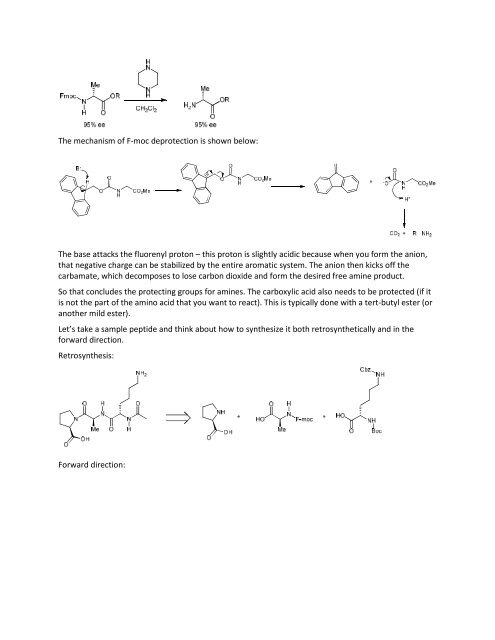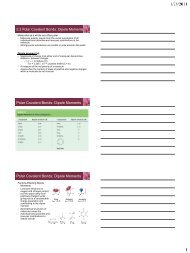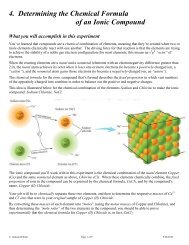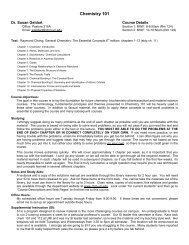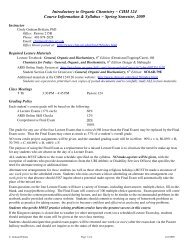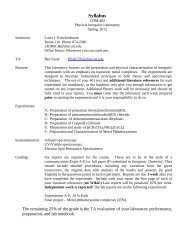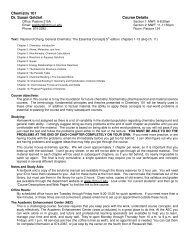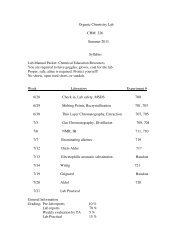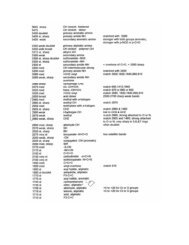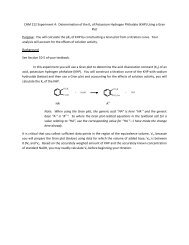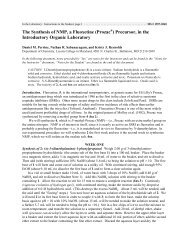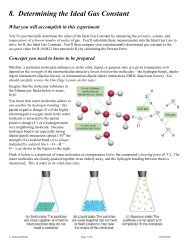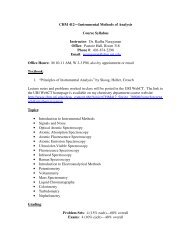2. Protecting groups - URI Department of Chemistry
2. Protecting groups - URI Department of Chemistry
2. Protecting groups - URI Department of Chemistry
You also want an ePaper? Increase the reach of your titles
YUMPU automatically turns print PDFs into web optimized ePapers that Google loves.
The mechanism <strong>of</strong> F-moc deprotection is shown below:The base attacks the fluorenyl proton – this proton is slightly acidic because when you form the anion,that negative charge can be stabilized by the entire aromatic system. The anion then kicks <strong>of</strong>f thecarbamate, which decomposes to lose carbon dioxide and form the desired free amine product.So that concludes the protecting <strong>groups</strong> for amines. The carboxylic acid also needs to be protected (if itis not the part <strong>of</strong> the amino acid that you want to react). This is typically done with a tert-butyl ester (oranother mild ester).Let’s take a sample peptide and think about how to synthesize it both retrosynthetically and in theforward direction.Retrosynthesis:Forward direction:


